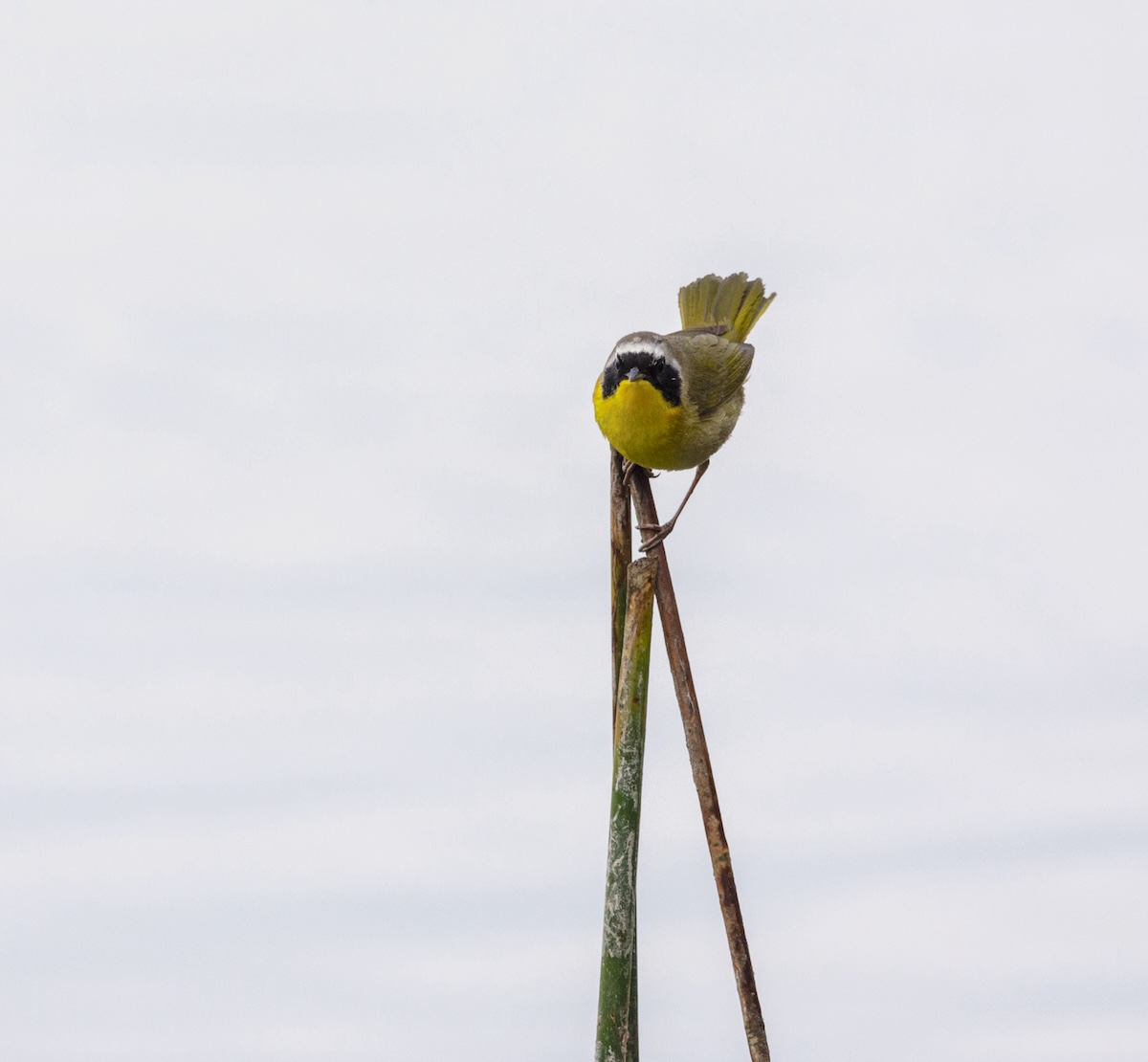
There is something about the wetlands that defies our human tendency to categorize and compartmentalize the world. Water and land become not opposites but conspirators in a grand ecological symphony. I’ve spent seven decades on this planet, the last fifty five with a camera in hand, and still find myself humbled by these in-between spaces.
On a Tuesday morning in early spring, I wandered the cattail-lined paths of the California wetlands with no particular agenda—a rarity in this life so often dictated by lists and expectations. The fog had just begun to lift, leaving behind a canvas of muted grays.
Mary Oliver once wrote that “Attention is the beginning of devotion,” and there’s truth in that. It was this kind of quiet attention that allowed me to notice a flash of yellow that caught my peripheral vision. Before I could process what was happening, my hands had already raised the camera, a movement so rehearsed over decades that it bypasses thought entirely.
There it perched, a Common Yellow-throat (Geothlypis trichas), balanced improbably on crossing reeds like a tightrope walker at the circus. Its bright yellow throat and black mask giving it the appearance of a tiny bandit caught in the act. I managed one shot—just one—before it disappeared back into the reeds, leaving behind that singular frozen moment.
The Common Yellow-throat isn’t rare by any measure; its ubiquity is embedded in its very name. Yet rarity and value have never been synonymous in the natural world. As Rachel Carson reminds us, “Those who contemplate the beauty of the earth find reserves of strength that will endure as long as life lasts.“
At seventy years old, I find myself increasingly drawn not to the spectacular or the exotic, but to these quiet encounters—these small mercies granted by a world that owes us nothing. The Yellow-throat didn’t know I was there; it didn’t pose for my benefit. It simply existed, and for a moment, our separate journeys intersected.
What strikes me about this image now, as I sit at my desk with reading glasses perched precariously on my nose, is not any technical achievement. The composition happened too quickly for deliberation. Rather, it’s the bird’s posture—alert, head cocked slightly, as if listening to a distant song only it can hear.
Terry Tempest Williams once reflected that “The eyes of the future are looking back at us and they are praying for us to see beyond our own time.” Perhaps this is why I continue to trudge through marshes with equipment weighing heavily on my aging shoulders. These glimpses—however brief—anchor me to something beyond myself, beyond my own finite existence.
The Common Yellow-throat will continue its springtime courtship long after my cameras have been passed down to younger hands. The wetlands will flood and recede in ancient rhythms that predate our species. And yet, for one fleeting moment, our stories converged—the bird, the photographer, the light—resulting in this single frame.
As I age, I find wisdom in these chance encounters.
Life, like bird photography, is largely about showing up, paying attention, and remaining open to whatever crosses your path.
Sometimes you get one shot.
Sometimes that’s enough.